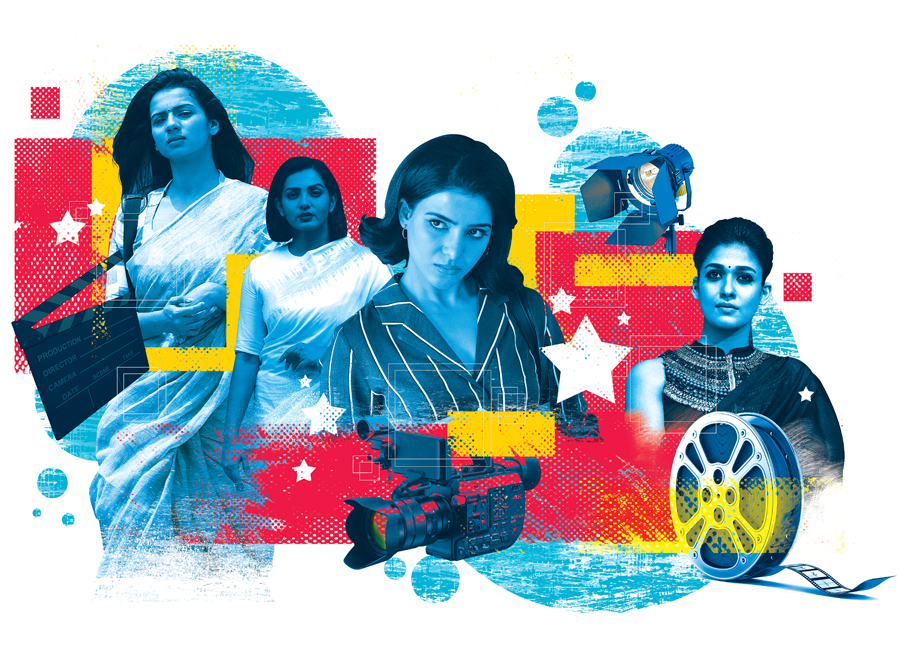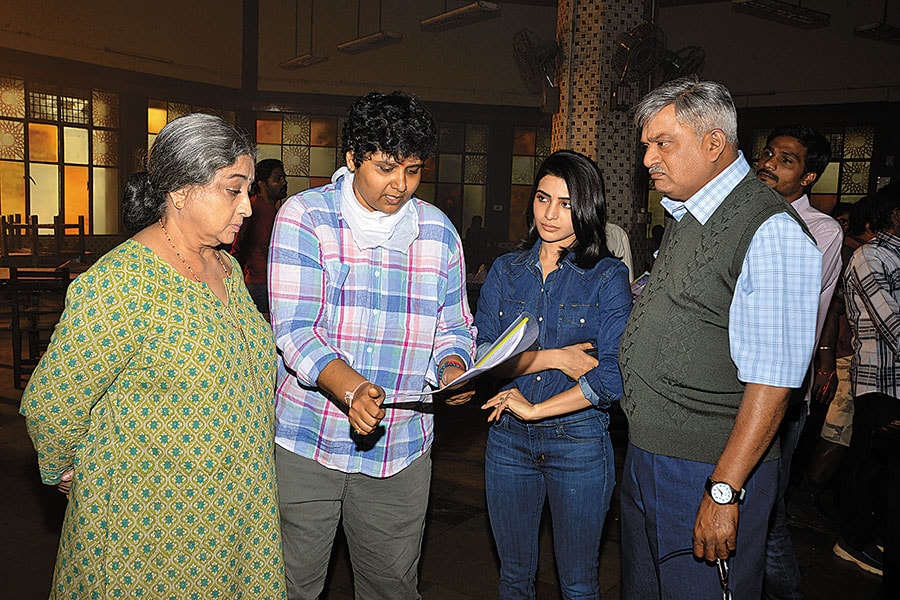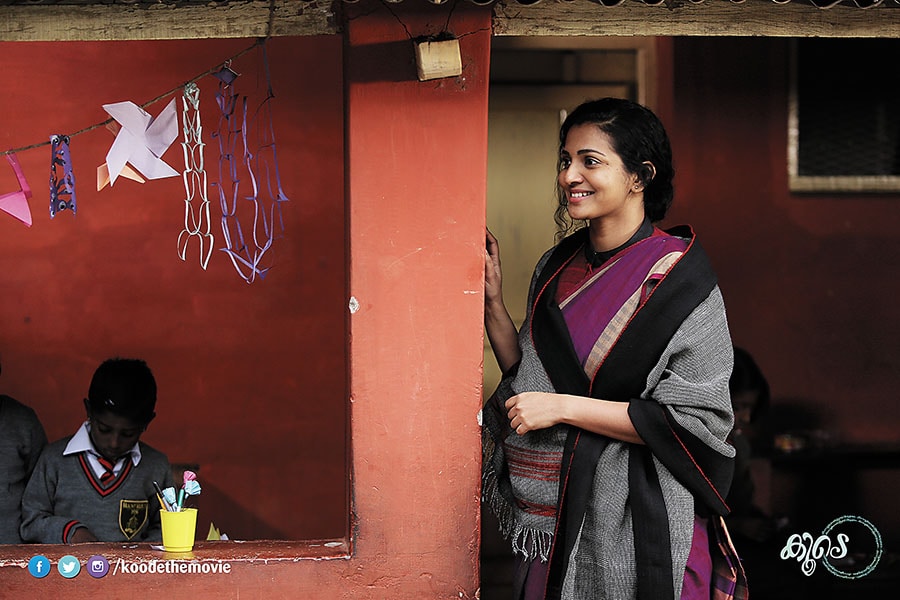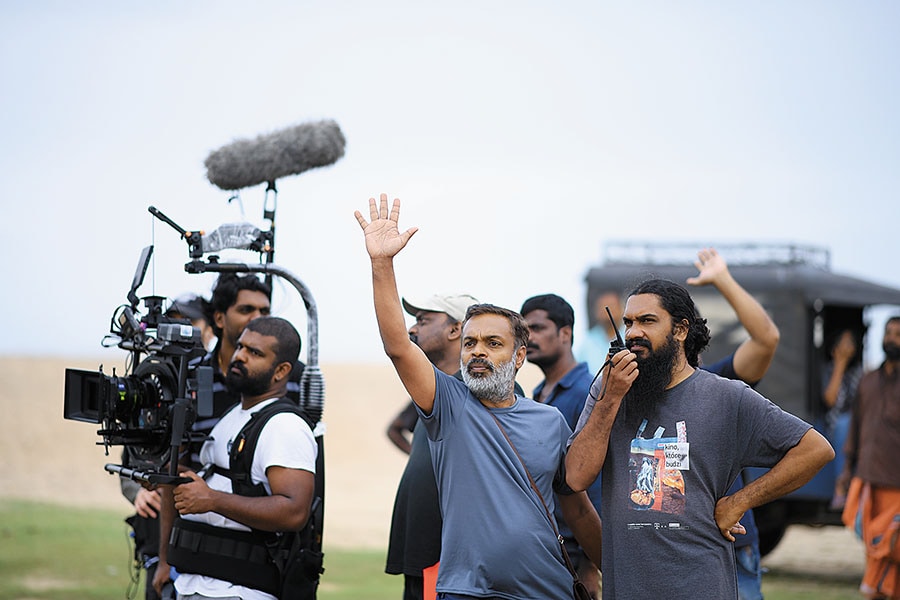
South Indian movies are (finally) putting women at the lead
Women filmmakers, actors and writers—including names like Nandini Reddy, Nayanthara and Parvathy—are bringing a change to south Indian cinema, traditionally known to deify male superstars
 Illustration: Chaitanya Dinesh Surpur
Illustration: Chaitanya Dinesh SurpurSruthi Hariharan is a rare actor. Rare, because she ensures that even her one-dimensional, limited roles in hero-centric films are not sexist. Rare, because she speaks her mind: Be it about dealing with the casting couch early on in her career, voicing her disapproval at being told to wear costumes she is not comfortable in, or standing up to a superstar who allegedly harassed her during a film shoot. Sruthi, a popular actor who has been working in Kannada and Tamil films for close to a decade, also paid a price, especially for saying “#MeToo”. In an industry known to rally behind the might of its male stars, film offers coming her way fell from over three scripts a week to almost none over the last year. Then came the National Award in August.
Sruthi, 30, received a Special Mention for her portrayal of a widow struggling with her sexual desires in Nathicharami. The movie also picked up four other awards, including Best Kannada Film. “I don’t know how quickly or how much this will change things, but the National Award has given me the confidence to trust myself and keep doing the kind of films I believe in,” she says. “There are directors who want to work with me. Films going beyond the ‘hero-worship’ formula are being made, and are appreciated by critics and the audience. This is changing the rhythm of commercial filmmaking down South.”
Telugu filmmaker Nandini Reddy would agree with Sruthi on change being afoot, as would actors Parvathy and Nayanthara from the Malayalam and Tamil film industries respectively. Around the time the National Award was announced, Reddy’s female-led fantasy comedy Oh! Baby—revolving around Samantha Akkineni and Lakshmi—entered the ₹40-crore club, a sizeable box office performance for a ₹10-crore budget film.
 From left: Lakshmi, director Nandini Reddy, Samantha Akkineni and Rajendra Prasad on the sets of Oh! Baby. Reddy is vocal about the prejudice against women in films
From left: Lakshmi, director Nandini Reddy, Samantha Akkineni and Rajendra Prasad on the sets of Oh! Baby. Reddy is vocal about the prejudice against women in filmsMeanwhile, Parvathy was backing offbeat Malayalam ventures, receiving praise for her portrayal of Pallavi, an aspiring pilot who fights for her career and justice after surviving an acid attack from an abusive boyfriend, in the film Uyare, and for her sensitive performance in the film Virus, where she plays Annu, a doctor who is at the centre of Kerala’s fight against the Nipah virus outbreak.
In Tamil Nadu, films were beginning to ride solely on Nayanthara’s star power, following the box office successes of Imaikkaa Nodigal (it earned about ₹34 crore worldwide) and Kolamavu Kokila (₹36 crore worldwide) last year. Theatres were sporting ‘Houseful’ boards, huge first-day openings, brisk ticket sales in the black market, and screenings starting at 5 am, all of which have traditionally been the preserves of heroes like Rajinikanth, Ajith and Vijay. Nayanthara has had six releases so far this year, three of which have no ‘star’ male leads.
“Despite the acclaim, I know that if my film [Oh! Baby] had made the same amount of money with a male star in the lead, the industry would have considered it a bigger achievement,” says Reddy, describing the “uphill battle” she had to face for six years before producers in the Telugu industry trusted her with her first feature film, Ala Modalaindi, in 2011. This was after she had proven herself as an assistant director for over a decade.
 Koode, featuring Parvathy, had women queuing up outside theatres, an anomany considering most first-week audiences are men
Koode, featuring Parvathy, had women queuing up outside theatres, an anomany considering most first-week audiences are men“That’s when I started to read between the lines and realised that the prejudice exists. Even men struggle to get their first film bankrolled, but I had to work 30 to 40 percent harder than a male counterpart. That was my burden to carry, and I was determined to carry it,” she says. Reddy has made three films since 2011, Oh! Baby being her fourth and biggest commercial release. “A hit debut film did not make things easy… as my scale gets bigger and my vision more ambitious, the doubts remain. Now people think that I can make family entertainers or romcoms, but cannot handle a big-budget action film with a superstar. This perception will also be proved wrong in time.”
Framing the Feminine
The Hindi film industry or Bollywood—even with its narratives skewed toward the northern ‘cow belt’, or metropolises like Mumbai, Delhi or Kolkata—is often considered to be synonymous with Indian cinema. However, when it comes to the number of films made annually, the South (that counts Telugu, Tamil, Kannada and Malayalam as dominant industries) often has the upper hand. The Ficci-EY Media and Entertainment Industry Report 2019 says out of the total of 1,776 films made in India in 2018, the highest number of releases were in Kannada (243), followed by Hindi (238), Telugu (237) and Tamil (197). The report adds that while Hindi constituted about 42 percent of the ₹174.5 billion net box office revenues in 2018, regional cinema, led by the South, comprised 47 percent.
Despite such big numbers, each of these industries is a fledgling when it comes to gender sensitisation. For example, a research led by IBM studied 4,000 Hindi movies released between 1970 and 2017 to show that the screen time occupied by female actors was just 31.5 percent compared to 68.5 percent for male actors. The number of films with women as central characters stood at just 11 percent between 2015 and 2017. While the industries in South India, individually being smaller in size and scale, do not have similar researched datasets, women working in industries of the four languages say the situation has been somewhat similar to, or possibly even worse than, Bollywood.

This is evident through how, despite the awareness around gender sensitivity, each of the four languages has had some problematic films this year. To give a few examples, Telugu big-budget film Saaho, fraught with sexist dialogues, had Shraddha Kapoor’s cop character messing up all her cases, only to have ‘hero’ Prabhas save the day. In Tamil film Mr Local, actor Sivakarthikeyan’s character, while not insulting the women in his life, disparages the #MeToo movement, and promotes body shaming and transphobia.
Kannada writer Sandhya Rani believes that the gender degradation in South Indian cinema intensified a little before the turn of the century. She recounts how directors such as Puttanna Kanagal, K Viswanath and Bharathiraja made “women-oriented films” in the 1970s and ’80s that were considered ahead of their time. “But if you observe closely, filmmakers of this generation—with the exception of K Balachander and Girish Kasaravalli—often narrated the story of an ideal woman, as seen by a man. A woman who would do anything to save her family, would readily forgive her husband, sacrifice her happiness for the betterment of everyone else, etc,” says Rani.
Then, in the ’90s and early 2000s, the industries stumbled upon the perfect money-spinner. The need to tell glamorous stories mounted on a large scale for mass appeal led to the rise of the superstar in South Indian cinema: The aggressive, larger-than-life commoner who single-handedly fights the system and beats up an army of goons, while mansplaining his way around the women in his life with the many ‘punch dialogues’ he had on the tip of his tongue. “The female actor was reduced to a caricature that provided the glam quotient or the romance factor in the film. Even today, industries haven’t gotten over this ‘taming the shrew’ hangover completely,” says Rani.
Direction assistant Jeny Dolly Antony agrees. “This is why most of the ‘shero’ roles offered to actors end up just being female clones of male superstars. They talk, behave and fight just like the men. So, often, the character development remains superficial, lacking in vulnerability and nuance,” she says, believing that people who encourage sexism in today’s cinema know fully well what they are doing. “Though the situation is drastically changing as we speak, there was a time not long ago when a bunch of actors and producers with money and power wanted to keep this formula alive because they had become too comfortable with their stereotypes. They did not want art to challenge them because then they would have had to perform better, write better, work harder, and risk putting in money and not getting it back.”
Antony is among the new-age voices in Tamil cinema, telling stories about gender, caste and class hierarchies. She has assisted Pa Ranjith in two of Rajinikanth’s recent films Kabali and Kaala. A glimmer of change is visible in the way both these films treat female characters, given that many movies starring Rajinikanth have been called out as misogynistic.
Be it Thambikhu Entha Ooru (1984) where he breaks into the house of the ‘rich, arrogant’ heroine, and kisses her forcibly to teach her a lesson, or Mannan (1992) where he slaps the heroine while declaring that a “woman ought to behave like a woman”. Even last year in Shankar’s 2.0, both Amy Jackson and Rajinikanth play robots, the difference being that while his Chitti is a warrior robot designed to help soldiers in the battlefield, her Nila is programmed to be a ‘friend’, ‘caretaker’ or ‘house help’.
In Kabali and Kaala, however, one gets to see Rajinikanth become vulnerable. While Kabali’s daughter (played by Dhanshika) is a trained assassin who saves her father during a shootout, the characters of Huma Qureshi (Zareena), Anjali Patil (Puyal) and Easwari Rao (Selvi) in Kaala hold their own fort, support each other and are unafraid to tell the hero when he’s wrong. “Basically, men need to take care of their own masculinity on screen and evolve with time,” says Antony.
Setting Precedents
Anjali Menon, one of Malayalam cinema’s most bankable directors, says that as long as chauvinistic elements are loved and lapped up by the audience, there will always be filmmakers who will create such content. “While gender sensitivity is never the prerogative of women alone, we have to look at the role of the audience too,” says the filmmaker, whose film Bangalore Days, a gender sensitive multi-starrer, was one of the biggest blockbusters of 2014. “In the South, the bulk of the audience watching your film in the crucial first week comprises men. So to earn maximum money, filmmakers often create content that appeals to them. However, last year, I was happy to see women queuing up to watch my film Koode. There is a great deal of power in them asserting their choices like this.”
Menon believes that investor confidence in filmmakers who are women tends to rise in industries where there are precedents of women winning at the box office. Her counterpart Geetu Mohandas’s experience shows how this might be true. Even after her debut fearture film Liar’s Dice won two National Awards (Best Actress for Geetanjali Thapa and Best Cinematography for Rajeev Ravi, who is married to Geetu), was screened at the Sundance Film Festival and selected as India’s official entry to the Oscars in 2014, Geetu says the road kept “narrowing down” for her second film Moothon. The Malayalam-Hindi bilingual film about a 14-year-old boy who comes to Mumbai in search of his older brother signed star Nivin Pauly in the lead.
 Director Sanal Kumar Sasidharan (extreme right) tells stories about women navigating gender and caste hierarchies
Director Sanal Kumar Sasidharan (extreme right) tells stories about women navigating gender and caste hierarchies"Still, when I went to the market, people told me that I am the minus for the film. Is it because my story does not have ‘mass appeal’, is it because they think my ‘international festival circuit filmmaker’ tag will hurt the film’s commercial prospects, or is it because of my gender? I am confused. It’s like you are damned if you do and you are damned if you don’t.” Moothon, which is produced by Anurag Kashyap, is now scheduled for a November release and is the opening film of the 21st Mumbai Film Festival on October 17. “All of us are here to find our space and our voices, and history shows us that whenever a woman is involved, the experience and the outcome of a work of art have always been different.”
Women across the four industries also believe that having a godfather does not necessarily shield them from double standards. Actor Niharika Konidela, daughter of actor-producer Nagendra Babu and niece of Telugu superstar Chiranjeevi, recalls how both her family and the industry was skpetical when she decided to launch a production banner, Pink Elephant Pictures, focussing on digital content. “But once my first web film was successful, they no longer had any questions,” she says. “So it’s important that people trust women and take them seriously. If the market could believe in a young, one-film-old director like Sujeeth with over ₹300 crore to make Saaho with Prabhas, given that expectations were sky-high post Baahubali, there’s no reason why they can’t give a chance to a woman, who has the same vision and passion, to prove herself.”
He for She
Many young male actors, producers and filmmakers are becoming sensitive to gender dynamics and are prioritising good scripts over machismo, says Asha Achy Joseph, a founding member of the Kerala-based Women in Cinema Collective (WCC). “Camps still exist in the industry and the shift is slow. Male stars continue to control a film’s fate. But there is also a collective consciousness that is empowering people to push for change,” she says.

An example of this change is Sanal Kumar Sasidharan, whose Malayalam films Ozhivudivasathe Kali, S Durga and more recently Chola, have told stories about women navigating daily gender and caste harassment. “Men should be held accountable for the kind of content they put out. It is our responsibility to counter the patriarchal ways of our ancestors,” he says. “The change might not be immediate, but it [gender sensitive films] might start conversations and debates. Initially, those conversations might just be among film lovers or critics, but slowly, they will reach the larger society.”
The WCC is also paving the way to make the film industry an inclusive and professional workspace by calling for labour reforms, insurance for crew members, and security and sanitation facilities on film sets. This is because, Joseph says, the push to the industry should also be at the policy level. “Films mirror society and vice versa, so as long as women are not treated well in society, they will not be given their due on screen,” says Joseph, who is also the dean, SH School of Communication, Sacred Heart College in Kochi.
According to Sruthi, while it is encouraging to see women lead the change, it’s time men stepped up too. “Even if you want to continue making hero-centric films, where the titular character is a knight in shining armour fighting off 20 men, do it. But do not pull down women while doing so, or even dictate what you think a ‘sanskari nari’ ought to be like.”
(This story appears in the 30 November, -0001 issue of Forbes India. To visit our Archives, click here.)





